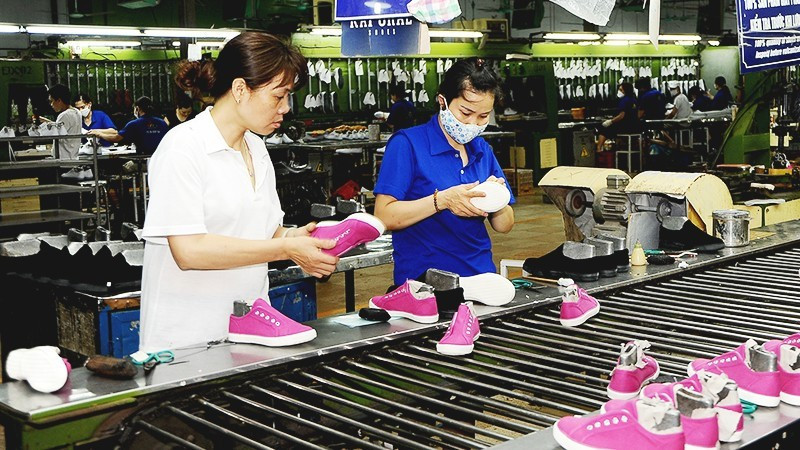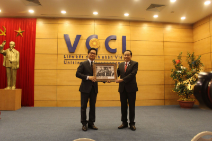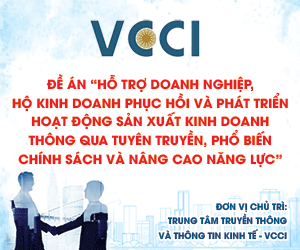EVFTA opens new opportunities amid US reciprocal tariffs
In the context of fluctuating global trade, Europe remains a highly promising market for Vietnamese enterprises seeking to boost exports — provided they can take full advantage of preferential mechanisms and market opportunities.

However, this is also a market that requires Vietnamese enterprises to innovate, especially in ensuring accurate and transparent Certificate of Origin (C/O), so that Vietnamese goods can affirm their position at a time when the US’s reciprocal tax policies are putting growing pressure on many countries.
Understanding the rules to maximise preferential benefits
After five years of implementation, the EU – Viet Nam Free Trade Agreement (EVFTA) has raised two-way trade between Viet Nam and the EU from 55.4 billion USD in 2020 to 68.3 billion USD in 2024. The agreement has generated highly positive results for import–export activities, creating momentum for several key export sectors to tap into the EU market. Notably, the rate of enterprises and industries making use of C/O under the EVFTA has been relatively high, particularly in sectors such as agriculture, seafood, and leather–footwear.
However, the global economy is currently undergoing complex changes. Many countries are introducing new trade policies—especially the US reciprocal tariff policy, which is expected to impact import–export flows. Meanwhile, the EVFTA bloc is advancing negotiations on new FTAs with other partners, which may increase competitive pressure on Vietnamese goods. This situation requires Vietnamese enterprises to better meet rules of C/O in order to maximise the EVFTA’s preferential benefits and make the most of the EU market, thereby mitigating the impact of the US reciprocal tax measures.
According to Trinh Thi Thu Hien, Deputy Director of the Import–Export Department under the Ministry of Industry and Trade, the rate of C/O issuance or the use of certificates of origin depends on each market and product. Import markets with seaports in Europe have a higher rate of C/O issuance or use due to more favourable logistics conditions than those located deep within the EU mainland.
Regarding the rate of preferential C/O issuance under the EVFTA, the figure of 35% is considered positive and is showing an upward trend. Hien clarified that this 35% of export value being issued C/Os does not mean that the remaining 65% of exports to the EU are subject to high tariffs, as some product categories in the EU already enjoy low import duties. Therefore, certain goods do not necessarily require a certificate of origin to access preferential tariffs.
“This 35% rate is only an average figure. The rate of C/O issuance or the use of certificates of origin varies depending on markets and product lines,” Hien noted.
Phan Thi Thanh Xuan, Vice President and Secretary-General of the Viet Nam Leather, Footwear and Handbag Association, affirmed that the EVFTA provides significant advantages for Viet Nam’s core footwear products exported to the EU. The rules of origin for footwear under the EVFTA are relatively favourable, requiring only about 40% value-added content in Viet Nam. Export growth to the EU has remained strong, offsetting declines in other markets.
She added that the EVFTA offers additional advantages, as major product lines such as sports shoes — one of Viet Nam’s leading exports — have already benefited from a 0% tariff rate when entering the EU market. This has been a key factor driving the sector’s expansion into the EU, which currently accounts for about 24–26% of total export turnover for the entire industry, compensating for losses in other markets.
To maintain and expand exports, Phan Thi Thanh Xuan advised enterprises to strengthen their internal capacity and stay informed through timely updates to ensure export success. The EU is a demanding market with stringent technical requirements, while Vietnamese manufacturers still mainly focus on product lines in which they have traditional strengths and have yet to fully tap into other types of footwear with strong consumer demand in Europe.
The EU market is known for its strict technical barriers. For example, the REACH regulation concerns hazardous chemicals in products and requires a very high level of compliance. In the near future, under the European Commission’s Green Deal, a series of new laws will be introduced, including the Supply Chain Due Diligence Law and sustainability reporting requirements. These technical demands are mandatory for all exporters and must be strictly complied with.
Ensuring transparency for smooth market access
As a seafood enterprise, Ngo Minh Phuong, CEO of Viet Truong Co., Ltd., stated that implementing the EVFTA has helped increase both the company’s and the industry’s export turnover by about 200%. To achieve this, the enterprise ensured its sourcing and traceability met standards for obtaining C/Os, qualifying products for export to Europe and building customer trust. In addition, the enterprise has focused on developing green strategies and meeting carbon certification standards to align with global sustainability trends.
Do Ngoc Hung, Commercial Counsellor at the Viet Nam Trade Office in the US, explained that reciprocal tariffs have become a central tool in US trade policy — a long-term strategy. This requires Viet Nam to respond promptly and comprehensively, through both bilateral negotiations and maximising the benefits of existing FTAs. At the same time, enterprises must comply with current US regulations, especially those on origin, documentation, and certification, which must now be more standardised and transparent than ever.
Ngo Minh Phuong also noted that changes in US tax policies have affected order flows. Enterprises need to remain flexible by seeking additional markets, including those under the EVFTA. However, to make full use of the European market, businesses cannot act alone, and they need the support of the Government and relevant agencies.
According to Trinh Thi Thu Hien, the Ministry of Industry and Trade is implementing a range of coordinated measures to support enterprises in tapping into FTA markets and increasing the rate of preferential origin certification. These include establishing mechanisms and policies to ensure transparency in origin verification; focusing on rules related to the prevention of origin fraud; guiding local authorities on proper C/O issuance; ensuring that exported goods genuinely qualify for FTA tariff preferences; and working closely with foreign customs authorities to ensure that the goods of the correct origin enjoy preferential tariffs.
In addition, the Ministry is implementing appropriate measures to handle goods involved in origin-related violations; reforming administrative procedures, and addressing concerns of manufacturing and exporting enterprises regarding rules of origin and the issuance of C/Os.








